'This mandolin needs to be in Topeka': Instrument Albert Shutt made in 1912 returns home
A mandolin made 111 years ago in Topeka by Albert Shutt, a highly regarded inventor and creator of stringed instruments, is now back in the capital city, where music store owner Jimmy Hayes is having it lovingly restored.
Kathy Holden, of Missoula, Montana, told The Capital-Journal on Thursday about how she gave Hayes the mandolin three or four months ago.
Holden said the mandolin was owned by her late husband's grandfather, John Eakes, of Topeka, who lived from 1894 to 1988.
Hayes offered to pay the costs to ship the mandolin here, but Holden insisted upon paying, she said.
"This mandolin needs to be in Topeka, where John Eakes was born and raised," she said.
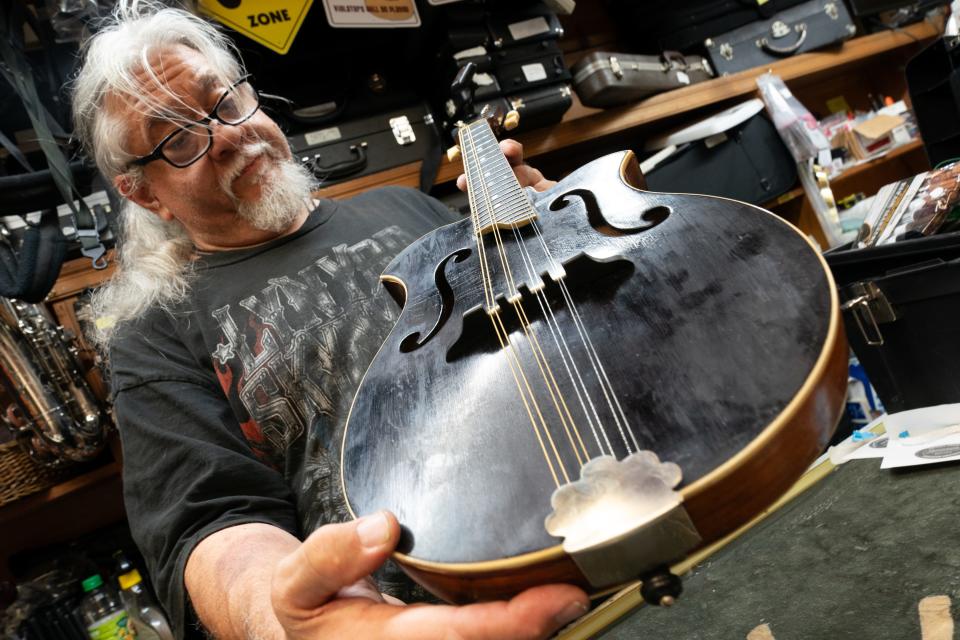
'I just have to tell the story'
Hayes, 74, showed the mandolin to The Capital-Journal at his store, Hayes House of Music, which has been in business here since May 1973.
"I just have to tell the story," he said. "It's just, for me, so unique for Topeka."
The Shutt mandolin is very meaningful to Hayes, he said.
He said he is willing to loan it out to be displayed, such as at a museum, but he'll never sell it.
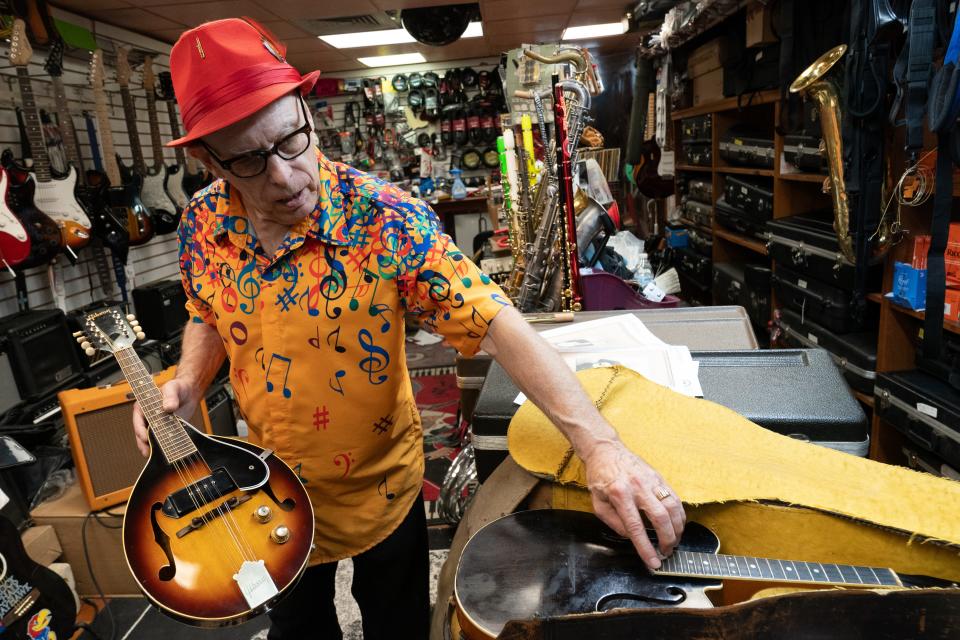
Who was Albert Shutt?
The mandolin's creator, Shutt, was a musician, music teacher, songwriter and instrument designer.
Shutt was born in 1877 and came with his family in 1891 to Topeka, where he taught music lessons from 1901 to 1962.
He taught students to play the mandolin, violin, banjo and guitar, said the website of the Kansas Historical Society.
Beginning in 1906, Shutt patented nine different inventions for stringed instruments.
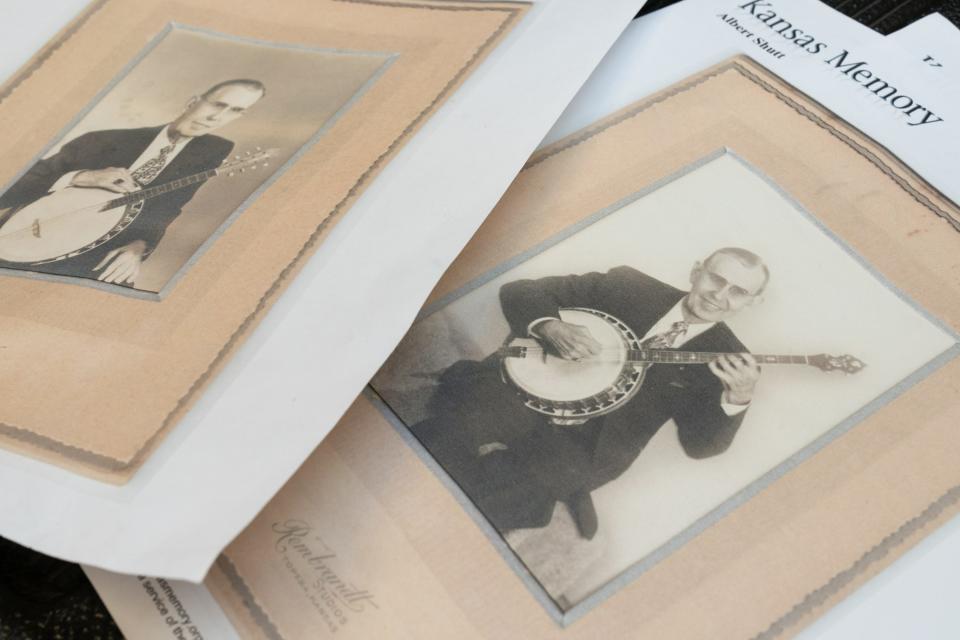
Those included an elevated pickguard, a tuner, a compensating bridge, a glass tone bar, several new mandolin designs, the Shutt mando-banjo and the mando-bass-harp guitar, said the historical society website.
Shutt was the first to put F-holes — which were already present in violins, cellos and basses — in guitars and mandolins, as well as the first to put a raised pickguard on those instruments to limit vibrations, Hayes said.
Shutt's instruments were made to order in his Topeka home.
"The Shutt-Mandolin Guitar Co.'s biggest competition was Gibson, and it was unable to surpass them and go mainstream," the historical society website said.
Albert Shutt also played in a band called Shutt Banjo Band
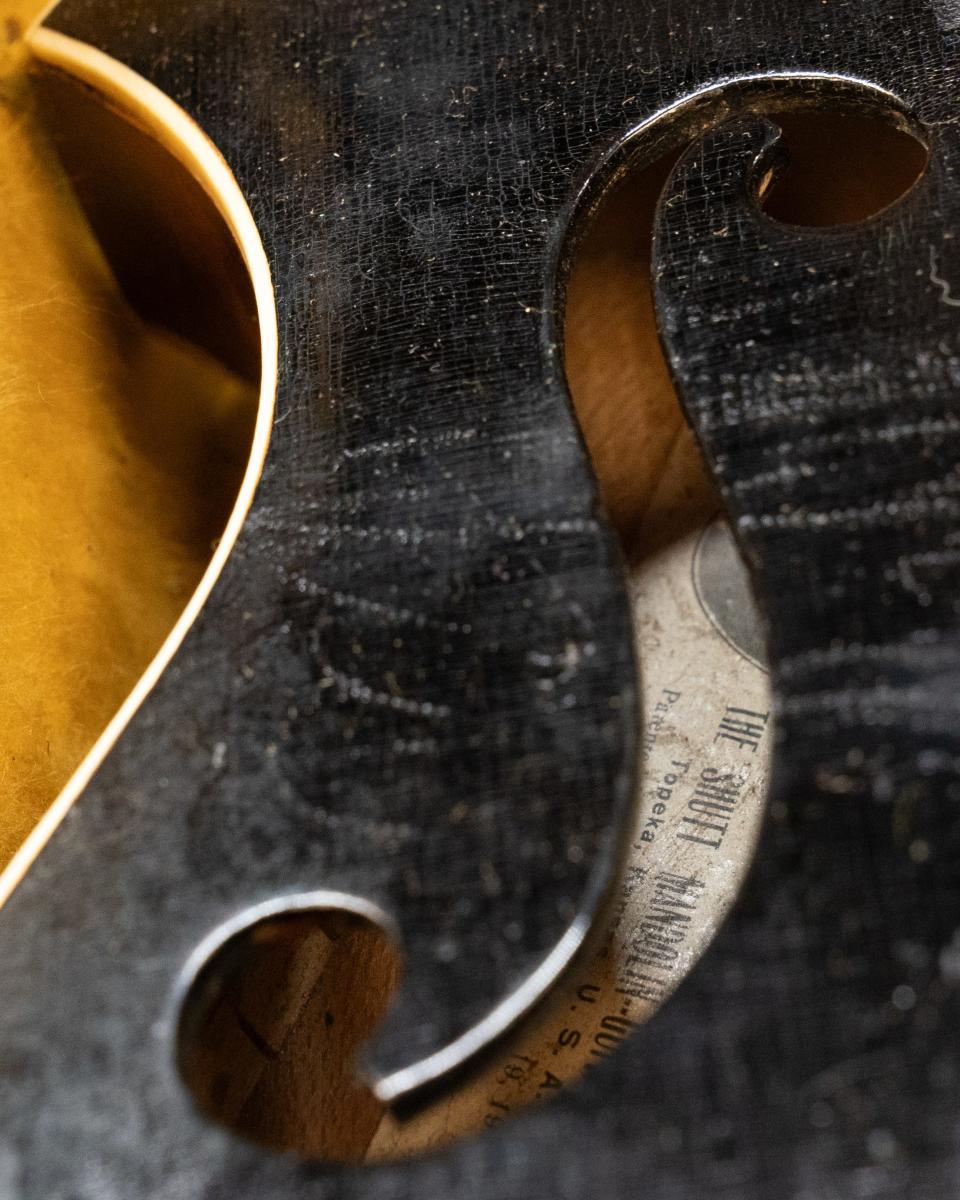
Shutt also started and played in the Shutt Banjo Band, in which the performers played instruments he made, that site said.
It said that band was the first to perform on Topeka's WIBW-AM radio when that station went on the air in 1927.
Shutt also composed a song called "Allegiance," which was debuted by Topeka's Marshall's Band at the 1930 Memorial Day Parade here, and was later played by the Army, Navy and Marine Corps bands in Washington, D.C., the historical society website said.
Shutt died in 1963 in Topeka.
'Somebody up there'
Hayes said he was contacted three or four months ago by Holden, who said she wanted to give him the mandolin.
At the time, Hayes had never heard of Shutt, but he said he did some research and learned about him.
The mandolin's serial number is 2007 and Hayes' business address is 2007 S.W. 6th Ave., he said.
He doesn't think that's coincidence.
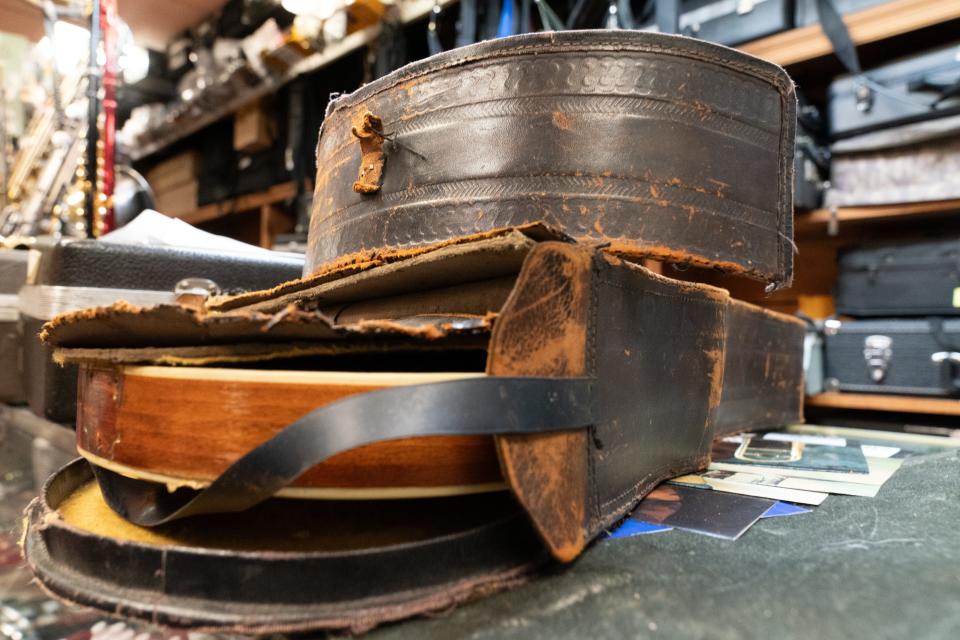
Pointing to the sky, he said, "That's somebody up there knowing where it's supposed to be."
Hayes remains in the process of having the mandolin restored. He said it has been played a lot.
Holden also gave Hayes the mandolin's case. He said he plans to restore that, too.
'He's my great grandpa'
Hayes said he was at the Prairie Band Casino on June 29 with hopes of selling a classic 1953 trumpet and classic 1962 saxophone to the trumpeter and saxophonist for the Righteous Brothers band. While waiting, Hayes talked with security manager Staci Hartner-Uhl.
Hayes told her he had a mandolin made in 1912 in Topeka.
She immediately said "Albert Shutt," Hayes recalled.
He said he asked her how she knew the mandolin maker's name.
Hartner-Uhl replied, "He's my great grandpa."
That relationship was confirmed Friday by Hartner-Uhl's mother and Albert Shutt's granddaughter, Donna Shutt.
Donna Shutt said various Albert Shutt memorabilia has been provided to the Kansas Museum of History to be displayed after it reopens, which is expected to happen early next year.
Contract Tim Hrenchir at threnchir@gannett.com or 785-213-5934.
This article originally appeared on Topeka Capital-Journal: Mandolin made by renowned Topeka musician and craftsman returns home

